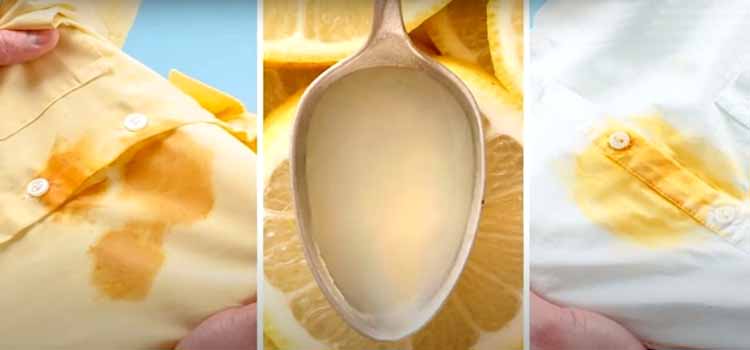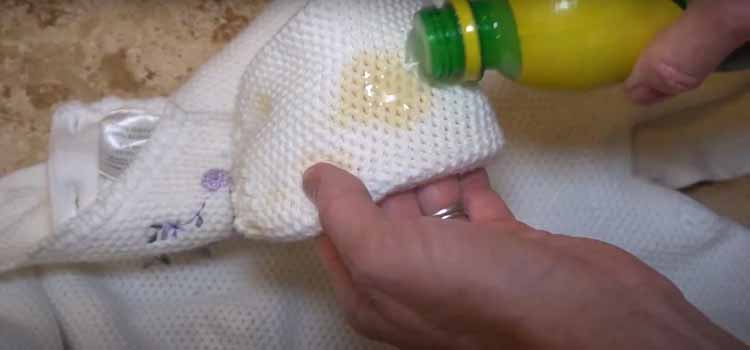As an Amazon Associate I earn from qualifying purchases.
Knowing How to Remove Old Spit Up Stains is essential for maintaining clean fabrics and keeping your baby’s environment fresh. Spit up stains are a reality of life when you have a newborn or toddler at home. Spit up can usually be cleaned up easily, but stains that have been overlooked and have dried up or settled in over time are a different problem. Old spit-up stains can be tough, but you can successfully eliminate them with the right tools and techniques.

This guide will dive into everything you need to know about removing old spit-up stains, including tips, tricks, and the best products. By the end, you’ll be able to tackle even the most stubborn stains on clothes, upholstery, carpets, and more.
Understanding the Nature of Spit Up Stains
What Causes Spit Up Stains?
Spit up, especially from babies, is primarily made of milk or formula mixed with stomach acid. These components contain proteins and fats that can bind tightly to fabric fibers. Over time, the acidity in spit up can cause the stain to become set, making it even harder to remove.
Why Do Old Stains Set In?
As time passes, the proteins in the spit-up dry and solidify into the fabric, creating what feels like a permanent mark. Heat from washing and drying clothes can further lock in the stain, which is why pre-treatment is important.
Tools You Need to Remove Spit Up Stains
Let’s talk about what you’ll need:
- White vinegar
- Baking soda
- Hydrogen peroxide
- Dish soap
- Enzyme-based cleaners
- Soft-bristle brush
- Microfiber cloths
- Cold water
Spit up stains are beautiful because they may be removed without the need for expensive commercial treatments. Basic household items like baking soda and vinegar are quite effective. For more difficult stains, enzyme-based cleansers can be a lifesaver since they degrade protein-based stains.
General Steps for Removing Old Spit Up Stains
- Blot, Don’t Rub: Always blot the stain with a clean cloth before applying any treatment. The paint may seep deeper into the fibers with rubbing.
- Cold Water Rinse: Start by rinsing the area with cold water. Hot water can set protein stains like spit up, making them harder to remove.
- Pre-Treatment: Use a stain remover or natural cleaner to pre-treat the area before washing or scrubbing.
- Test on a Small Area: If you’re using any chemical or homemade solution, always test it on a small, hidden area first to ensure it won’t damage the fabric.
Using Vinegar and Baking Soda to Remove Spit Up Stains

Using vinegar and baking soda together is one of the most used techniques for removing old spit up stains. These two common household items can remove stains and eliminate smells.
Step-by-Step Process:
- Mix a Solution: Fill a spray bottle with equal parts white vinegar and cold water.
- Apply to the Stain: After applying the solution on the stain, let it sit for five to ten minutes.
- Sprinkle Baking Soda: Sprinkle baking soda directly on top of the stain. It will start to fizz and lift the stain.
- Scrub Gently: Use a soft-bristle brush to scrub the stain gently in circular motions.
- Rinse with Cold Water: Rinse with cold water and blot dry with a clean cloth.
Using Hydrogen Peroxide and Dish Soap
Strong bleaching agents like hydrogen peroxide are effective on white and color-safe textiles. When used with dish cleaning soap, it paperwork an efficient stain-busting pair.
Caution: When to Avoid Using Hydrogen Peroxide
Avoid using hydrogen peroxide on dark or non-colorfast items, as it can bleach fabrics. Always begin by testing a tiny area.
Step-by-Step Process:
- Mix the Solution: Combine one tablespoon of hydrogen peroxide with one dish soap and two tablespoons of cold water.
- Apply to the Stain: Use a microfiber cloth to apply the mixture directly to the stain.
- Let Sit: Allow the solution to sit on the stain for 10-15 minutes.
- Rinse and Wash: Rinse the area with cold water, then wash as usual.
Removing Stains from Clothes and Fabrics
Extra care is needed for spit-up stains on garb, mainly sensitive fabrics like silk or wool. It’s OK to stay with mild, herbal techniques like vinegar or enzyme-based cleaners for these fabrics.
Tips for Delicate Fabrics:
- Avoid scrubbing delicate fabrics.
- Always air dry after treating to prevent setting the stain.
Removing Stains from Upholstery
For upholstery, like sofas and car seats, a more targeted approach is required. Start by blotting the area with cold water, then use an upholstery-specific cleaner or vinegar and baking soda.
Recommended Products for Upholstery:
- Folex Carpet Spot Remover
- Woolite Carpet and Upholstery Cleaner
Removing Stains from Carpets
Carpets are trickier because the spit up can seep into the fibers. A deep cleaning solution is required.
Deep Cleaning Methods for Carpets:
- Use a carpet cleaner with enzyme-based solutions.
- For stubborn stains, consider renting a steam cleaner.
Dealing with Spit Up Stains on Bedding and Mattresses
Spit up can be absorbed by mattresses, therefore responding fast is essential. To remove the stain, use a vinegar solution and baking soda to absorb the moisture.
Preventing Permanent Stains:
- Always use a mattress protector to avoid deep stains.
- Launder bedding immediately after spit up incidents.
Using Enzyme-Based Cleaners
Enzyme cleaners break down proteins, which makes them ideal for spit up stains. They are particularly effective on old stains.
Top Enzyme-Based Cleaners:
- BioKleen Bac-Out Stain Remover
- Zout Laundry Stain Remover
Natural Solutions for Eco-Friendly Cleaning
Natural cleaning solutions like lemon juice and essential oils are excellent alternatives for avoiding chemicals. Lemon juice’s acidity helps break down stains, while essential oils can provide a fresh scent.
Benefits of Natural Cleaners:
- Non-toxic and safe for children and pets.
- Ecologically favorable.
Common Mistakes to Avoid When Cleaning Spit Up Stains
- Using Hot Water: This can set protein-based stains permanently.
- Scrubbing Too Hard: This can damage the fabric and worsen the stain.
- Ignoring Stains: The longer you wait, the harder they are to remove.
Conclusion
It’s not always hard to remove old spit up stains. With the proper methods and drive, these tough stains can be successfully removed from a variety of surfaces. The most important thing is to treat the stain as soon as possible and follow the proper procedures, regardless of whether you use enzyme-based cleaners or natural techniques like vinegar and baking soda.
FAQs
It’s best to avoid bleach, especially on colored fabrics, as it can cause discoloration.
Generally, letting it sit for 10-15 minutes works well, but always check the product instructions.
Most are safe, but always first read the label and test on a small area.
It’s best to use cleaners specifically designed for leather.
Blot immediately with cold water and apply a stain remover or vinegar solution.
Old spit-up stains can be removed with pre-treatment and using appropriate stain removers or natural solutions.
Remove old saliva stains by pre-soaking them in enzyme detergent and washing them in warm water to break down proteins.
Pre-treat old milk stains with an enzyme-based cleaner or vinegar solution, then wash in warm water for best results.
Amazon and the Amazon logo are trademarks of Amazon.com, Inc, or its affiliates.
Leave a Reply